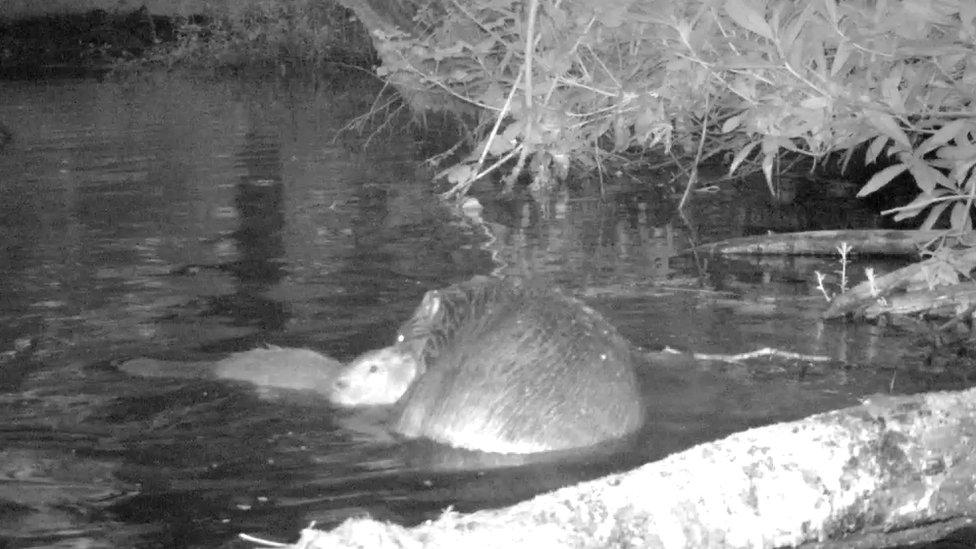The first baby beaver born in Exmoor for 400 years
- Published
- comments

A baby beaver has been born on Exmoor for the first time in 400 years.
The National Trust reintroduced two adult beavers in January 2020 and now a young beaver has been captured on camera with its mother.
The footage shows the six-week-old baby beaver, also known as a kit, swimming with its mother back to the family lodge whilst the mum stops to nibble a branch.
The two Eurasian beavers were released on the Holnicote Estate in Somerset for the first time in the National Trust's 125 year history.
The new family will stay together for the next two years before the baby will naturally go off to find a home of its own.
Jack Siviter, one of the rangers on the estate said: "We first had an inkling that our pair of beavers had mated successfully when the male started being a lot more active building and dragging wood and vegetation around the site in late spring.
"The female also changed her usual habits, and stayed out of sight, leaving the male to work alone. It was then several weeks until we spotted her again, and this is when our suspicions were confirmed that she had given birth."
The first time mother is named Grylls, after TV adventurer Bear Grylls because of her survival instincts.
The kit does not have a name yet, but the National Trust will be asking for suggestions on social media soon
Beavers are the second largest living rodent
Beavers form strong bonds and live in tight small family units
They will often store food underwater so they can get it if the water freezes over in the winter
Beavers were hunted to extinction during the 16th century, for their meat and fur, but they are very important to our environment as they can reduce flooding and encourage nature which is why some people say reintroducing them is important.
They are nature's engineers and since being introduced they have created a dam complex made from trees, mud, stones and vegetation. This has helped slow down the flow of water in the area, created ponds and new channels to hold more water.
The beavers have also stripped back bark from conifers to create habitats that are good for bats, owls, woodpeckers and invertebrates.
Beavers are known for their roles as engineers and their reintroduction will come with benefits for wildlife
Ben Eardley, Project Manager for the National Trust at Holnicote said: "The transformation of the habitat has been remarkable. To go from dry unmanaged woodland to a more open wetland complex in such a short time has not only boosted the variety of wildlife that we're seeing on the estate, but also numbers.
"This is really important because the beaver are doing a lot of what we want to see in terms of conservation and land management."
- Published12 July 2021
- Published12 July 2021
- Published13 July 2021
